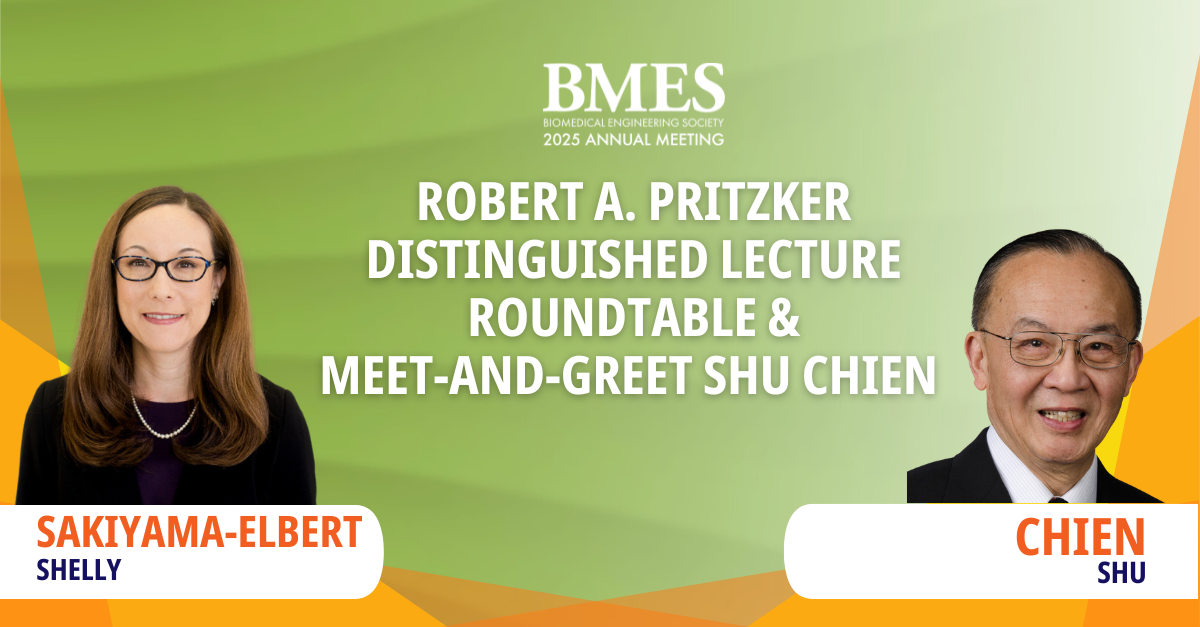Watch Now: Robert A. Pritzker Distinguished Lecture Roundtable & Meet-and-Greet Shu Chien
As the biomedical engineering community continues to evolve, the need for forward-looking dialogue around research, innovation, and funding has never...
BMES serves as the lead society and professional home for biomedical engineers and bioengineers. BMES membership has grown to over 6,700 members, with more than 110+ BMES Student Chapters, three Special Interest Groups (SIGs), and four professional journals.
Welcome to the BMES Hub, a cutting-edge collaborative platform created to connect members, foster innovation, and facilitate conversations within the biomedical engineering community.
Discover all of the ways that you can boost your presence and ROI at the 2024 BMES Annual Meeting. Browse a range of on-site and digital promotional opportunities designed to suit any goal or budget that will provide maximum impact.
Northeastern chemical engineer Thomas Webster, who specializes in developing nano-scale medicine and technology to treat diseases, is part of a contingency of scientists who are contributing ideas and technology to the Centers for Disease Control and Prevention to fight the COVID-19 outbreak, the university announced.
The idea of using nanoparticles is that the virus behind COVID-19 consists of a structure of a similar scale to nanoparticles, Webster - a BMES fellow - said in the article. At that scale, matter is ultra-small, about ten thousand times smaller than the width of a single strand of hair.
Since the outbreak began in late 2019, researchers have been racing to learn more about SARS-CoV-2, which is a strain from a family of viruses known as coronavirus for their crown-like shape, the article states.
Webster is proposing particles of similar sizes that could attach to SARS-CoV-2 viruses, disrupting their structure with a combination of infrared light treatment. That structural change would then halt the ability of the virus to survive and reproduce in the body.
“You have to think in this size range, in the nanoscale size range, if you want to detect viruses, if you want to deactivate them” Webster said in the article. Webster is the Art Zafiropoulo Chair of chemical engineering at Northeastern.
Finding and neutralizing viruses with nanomedicine is at the core of what Webster and other researchers call theranostics, which focuses on combining therapy and diagnosis. Using that approach, his lab has specialized in nanoparticles to fight the microbes that cause influenza and tuberculosis.
Read more HERE.

As the biomedical engineering community continues to evolve, the need for forward-looking dialogue around research, innovation, and funding has never...

As federal research funding landscapes continue to shift, many in the biomedical engineering community are facing growing uncertainty and widening...

Artificial intelligence is redefining the future of biomedical engineering—revolutionizing diagnostics, advancing personalized medicine, and...

A nanotech therapy created by scientists at Michigan State University and Stanford University could eat away portions of the plaques that cause heart...

Purdue University biomedical engineers have developed a handheld paper device that quickly and accurately detects a different strain of coronavirus,...

1 min read
Researchers at The University of Texas at Austin have developed new guidelines for fabricating nanoscale gel materials, or nanogels, that can deliver...